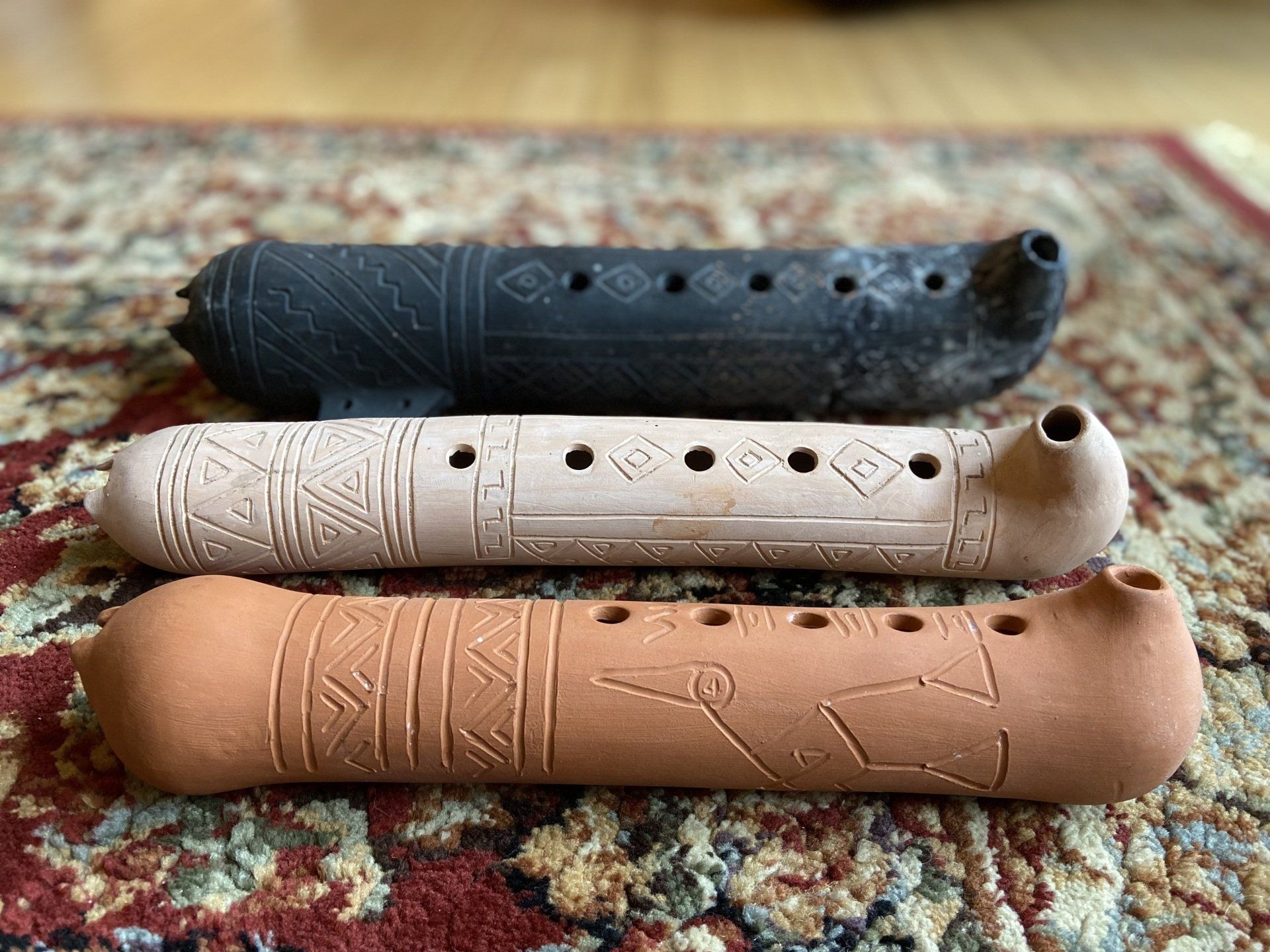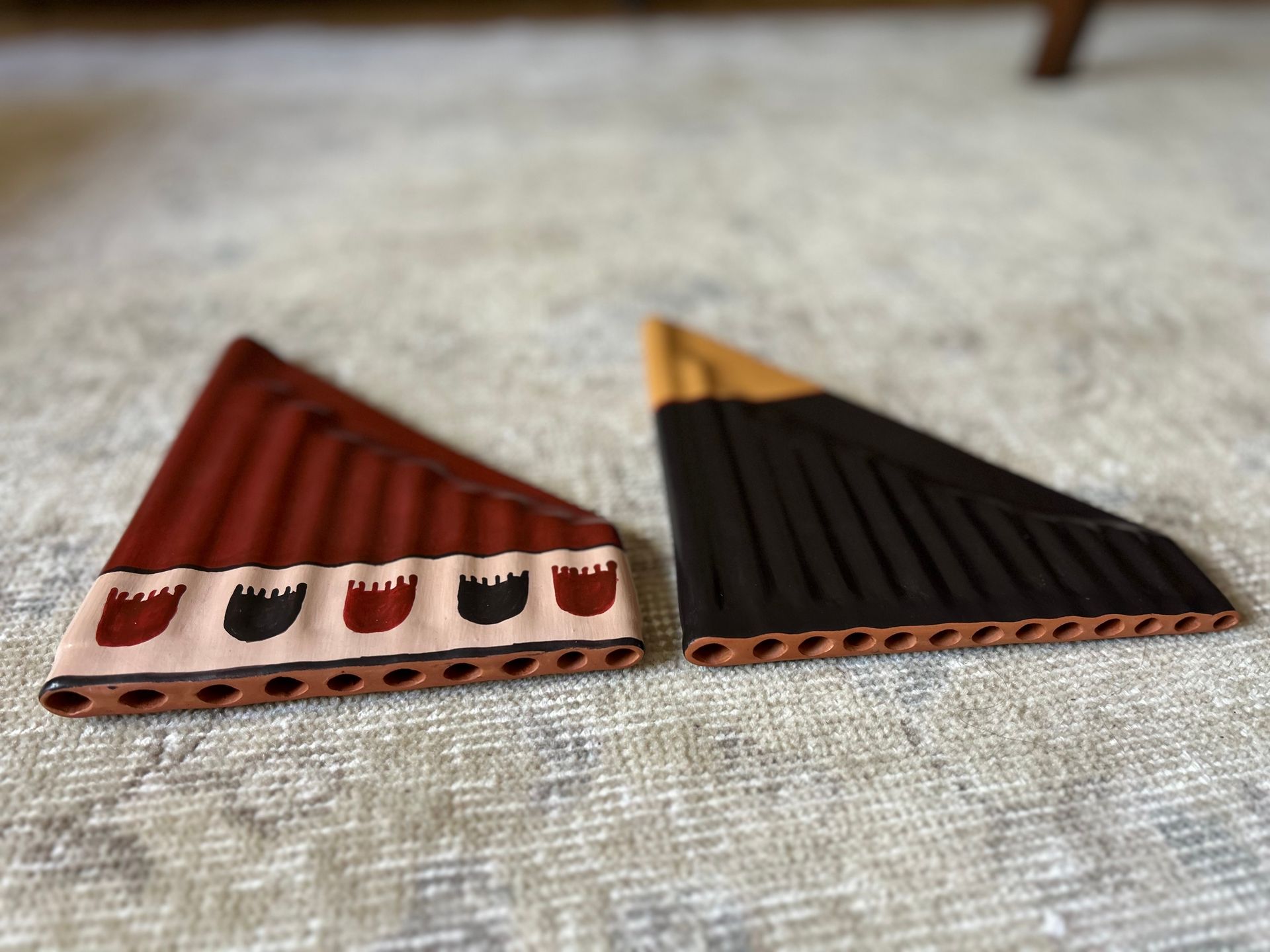Whistling Vessels
Peruvian pre-Columbian civilizations started to develop whistling vessels around 60 B.C. Whistling vessels produce pitches when the water contained inside the vessel travels from one compartment to another.

Each whistling vessel is tuned to a specific frequency
Ancient Peruvians used these instruments likely for religious ceremonies. Whistling vessels apparently occupied a privileged place in pre-Columbian culture, as they represented the confluence of all four elements: earth (instruments are made of clay), fire (used in the making of the vessel), water (contained inside the vessel) and air (which produces the whistling sound).
Pre-Columbian Ceramic Instruments
My interest in Pre-Columbian ceramic instruments dates back to 2011, when I was first introduced to whistling vessels and decided to write a chamber piece for the Society for New Music in which these instruments were featured.
To this end, I acquired four distinctively tuned whistling vessels made by Ana Maria La Rosa.
My first work using Pre-Columbian instruments Whistling Vessels can be heard here.
Quenas Chincha
It is believed that the first Quenas Chincha were constructed around 1000 CE. The instrument comes in different sizes and tunings. Most Quenas Chincha are able to produce a hexatonic unequally tempered scale.

Antaras Nazca
Replicas of Nazca antaras from the Valle de Las Trancas excavation

